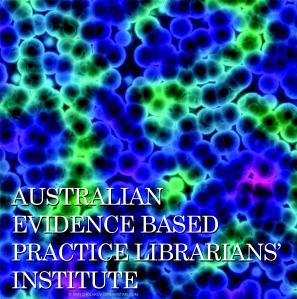End of year work life has been keeping me busy but I now have time to write about the final day of the EBP Residential Workshop for Librarians. I woke up about 7. Apparently, the fire alarm had gone off during the night but me being hearing impaired (and sleeps without hearing aids) meant that I did not hear it. If there had been a fire, someone would have had to open the door and shake my sholder. However, I wasn’t the only one who hadn’t heard it go off – another librarian in my building who has full hearing didn’t hear it either. Hmmm.
 After breakfast, we all assembled in a large group and went over the points needed when appraising a diagnostic test research article. The most important thing to note is: did the test use the current gold standard test to compare results against? The questions to ask are: is there a diagnostic dilemma? Gold standard comparison? Were the investigators conducting the tests blinded to the other test results? Were the tests (experiment and standard) given to all patients? What are the likelihood ratios? Likelihood ratio: If someone tests positive for a diease, how likely is it that they will have the disease? This ratio is calculated using sensitivity and specificity. A LR of >1 indicates presence of disease, while a LR of <1 indicates absence of disease. There are online calculators that assist with these calculations (done using a 2×2 worksheet) so you don’t have to worry about the number side of things. The calculator used as an example is the Alan Schwartz (Department of Medical Education at University of Illinois at Chicago) one (which I already know of). However, I plan to do some calculations, just so I can see how the LI is derived and how the sensitivity/specificity data is used.
After breakfast, we all assembled in a large group and went over the points needed when appraising a diagnostic test research article. The most important thing to note is: did the test use the current gold standard test to compare results against? The questions to ask are: is there a diagnostic dilemma? Gold standard comparison? Were the investigators conducting the tests blinded to the other test results? Were the tests (experiment and standard) given to all patients? What are the likelihood ratios? Likelihood ratio: If someone tests positive for a diease, how likely is it that they will have the disease? This ratio is calculated using sensitivity and specificity. A LR of >1 indicates presence of disease, while a LR of <1 indicates absence of disease. There are online calculators that assist with these calculations (done using a 2×2 worksheet) so you don’t have to worry about the number side of things. The calculator used as an example is the Alan Schwartz (Department of Medical Education at University of Illinois at Chicago) one (which I already know of). However, I plan to do some calculations, just so I can see how the LI is derived and how the sensitivity/specificity data is used.
I didn’t take many notes down during the last day so apologies if this post is sketchy. I will update if memory is jogged. The most important note I did take was the Sensitivity and Specificity MeSH term is not in the narrow PubMed Clinical Queries Diagnostic filter! It does appear in the broad filter. Interesting.
What have I done since returning to work? I have written about the workshop in this blog, participated in a dermatology journal club and explained about adding sensitivity/specificity when looking for evidence re test effectiveness, have reviewed my NRT document (still in process), and put a work experience student here to work in drawing a Haynes pyramid with our local resources in the appropriate sections (this is to be modified and put on our library’s evidence website).
All in all, I got a lot out of this workshop and I am still thinking about what I learnt from it. I would definitely recommend medical librarians attend!

